« Return to all search results
Title Search Results
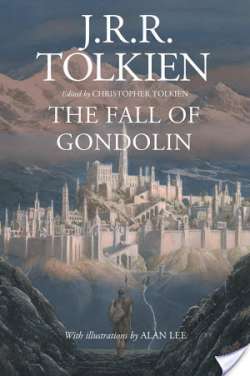
#1 NEW YORK TIMES BESTSELLER In the Tale of The Fall of Gondolin are two of the greatest powers in the world. There is Morgoth of the uttermost evil, unseen in this story but ruling over a vast military power from his fortress of Angband. Deeply opposed to Morgoth is Ulmo, second in might only to Manwë, chief of the Valar: he is called the Lord of Waters, of all seas, lakes, and rivers under the sky. But he works in secret in Middle-earth to support the Noldor, the kindred of the Elves among whom were numbered Húrin and Túrin Turambar. Central to this enmity of the gods is the city of Gondolin, beautiful but undiscoverable. It was built and peopled by Noldorin Elves who, when they dwelt in Valinor, the land of the gods, rebelled against their rule and fled to Middle-earth. Turgon King of Gondolin is hated and feared above all his enemies by Morgoth, who seeks in vain to discover the marvellously hidden city, while the gods in Valinor in heated debate largely refuse to intervene in support of Ulmo’s desires and designs. Into this world comes Tuor, cousin of Túrin, the instrument of Ulmo’s designs. Guided unseen by him Tuor sets out from the land of his birth on the fearful journey to Gondolin, and in one of the most arresting moments in the history of Middle-earth the sea-god himself appears to him, rising out of the ocean in the midst of a storm. In Gondolin he becomes great; he is wedded to Idril, Turgon’s daughter, and their son is Eärendel, whose birth and profound importance in days to come is foreseen by Ulmo. At last comes the terrible ending. Morgoth learns through an act of supreme treachery all that he needs to mount a devastating attack on the city, with Balrogs and dragons and numberless Orcs. After a minutely observed account of the fall of Gondolin, the tale ends with the escape of Túrin and Idril, with the child Eärendel, looking back from a cleft in the mountains as they flee southward, at the blazing wreckage of their city. They were journeying into a new story, the Tale of Eärendel, which Tolkien never wrote, but which is sketched out in this book from other sources. Following his presentation of Beren and Lúthien Christopher Tolkien has used the same ‘history in sequence’ mode in the writing of this edition of The Fall of Gondolin. In the words of J.R.R. Tolkien, it was ‘the first real story of this imaginary world’ and, together with Beren and Lúthien and The Children of Húrin, he regarded it as one of the three ‘Great Tales’ of the Elder Days.
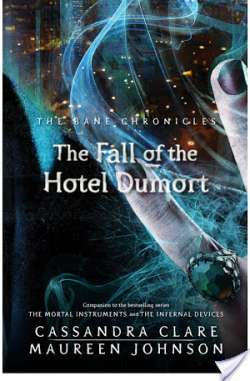
Magnus Bane watches the once-glamorous Hotel Dumort become something else altogether in 1970s New York City. One of ten adventures in The Bane Chronicles. Fifty years after the Jazz Age rise of the Hotel Dumort, immortal warlock Magnus Bane knows the Manhattan landmark is on the decline. The once-beautiful Hotel Dumort has fallen into a decayed thing, a ruin, as dead as a place can be. But the vampires don’t mind… This standalone e-only short story illuminates the life of the enigmatic Magnus Bane, whose alluring personality populates the pages of the #1 New York Times bestselling series, The Mortal Instruments and The Infernal Devices series. This story in The Bane Chronicles, The Fall of the Hotel Dumort, is written by Cassandra Clare and Maureen Johnson.
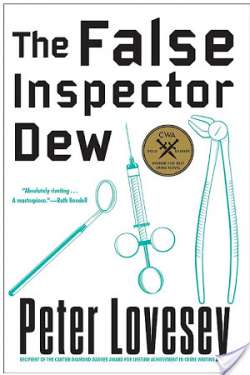
The year is 1921. A passionate affair between voracious romance reader Alma Webster and her dentist, Walter Baranov, has led to his wife’s murder. The lovers take flight aboard the Mauretania and the dentist takes the name of Inspector Dew, the detective who arrested the notorious wifekiller Dr. Crippen. But, in a disquieting twist, a murder occurs aboard ship and the captain invites “Inspector Dew” to investigate. From the Trade Paperback edition.
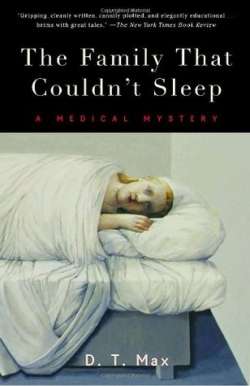
For two hundred years a noble Venetian family has suffered from an inherited disease that strikes their members in middle age, stealing their sleep, eating holes in their brains, and ending their lives in a matter of months. In Papua New Guinea, a primitive tribe is nearly obliterated by a sickness whose chief symptom is uncontrollable laughter. Across Europe, millions of sheep rub their fleeces raw before collapsing. In England, cows attack their owners in the milking parlors, while in the American West, thousands of deer starve to death in fields full of grass. What these strange conditions–including fatal familial insomnia, kuru, scrapie, and mad cow disease–share is their cause: prions. Prions are ordinary proteins that sometimes go wrong, resulting in neurological illnesses that are always fatal. Even more mysterious and frightening, prions are almost impossible to destroy because they are not alive and have no DNA–and the diseases they bring are now spreading around the world. In The Family That Couldn’t Sleep, essayist and journalist D. T. Max tells the spellbinding story of the prion’s hidden past and deadly future. Through exclusive interviews and original archival research, Max explains this story’s connection to human greed and ambition–from the Prussian chemist Justus von Liebig, who made cattle meatier by feeding them the flesh of other cows, to New Guinean natives whose custom of eating the brains of the dead nearly wiped them out. The biologists who have investigated these afflictions are just as extraordinary–for example, Daniel Carleton Gajdusek, a self-described “pedagogic pedophiliac pediatrician” who cracked kuru and won the Nobel Prize, and another Nobel winner, Stanley Prusiner, a driven, feared self-promoter who identified the key protein that revolutionized prion study. With remarkable precision, grace, and sympathy, Max–who himself suffers from an inherited neurological illness–explores maladies that have tormented humanity for centuries and gives reason to hope that someday cures will be found. And he eloquently demonstrates that in our relationship to nature and these ailments, we have been our own worst enemy.
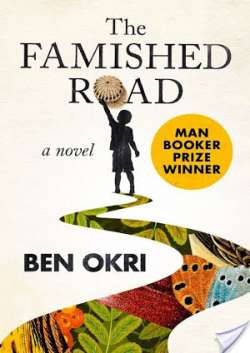
Winner of the Man Booker Prize: “Okri shares with García Márquez a vision of the world as one of infinite possibility. . . . A masterpiece” (The Boston Sunday Globe). Azaro is a spirit child, an abiku, existing, according to the African tradition, between life and death. Born into the human world, he must experience its joys and tragedies. His spirit companions come to him often, hounding him to leave his mortal world and join them in their idyllic one. Azaro foresees a trying life ahead, but he is born smiling. This is his story. When President Bill Clinton first went to Africa he quoted from The Famished Road, which has inspired literature, art, politics, and pop songs—and even been referenced in an episode of The Simpsons. A transformative story for all ages and all times, it means many things to many people. Few contemporary novels have aroused as much passion as this one. Indeed, twenty-five years after its breakout publication, the iconic story of Azaro’s travels continues to mesmerize new generations. For readers of Things Fall Apart or One Hundred Years of Solitude, this Man Booker Prize–winning blend of fabulism and gritty realism by the Nigerian author of Astonishing the Gods and Dangerous Love is a “dazzling, hypnotic” journey through Africa that “weaves the humblest detail with the most extravagant flight of fancy to create an astonishing fictional tapestry” (San Francisco Chronicle). Already considered a classic of world literature, it is “a masterpiece if ever one existed” (The Boston Sunday Globe).
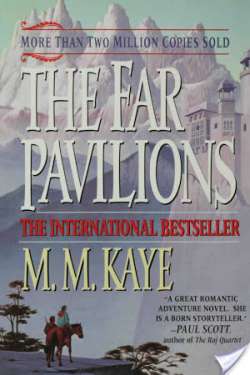
This sweeping epic set in 19th-century India begins in the foothills of the towering Himalayas and follows a young Indian-born orphan as he's raised in England and later returns to India where he falls in love with an Indian princess and struggles with cultural divides. The Far Pavilions is itself a Himalayan achievement, a book we hate to see come to an end. It is a passionate, triumphant story that excites us, fills us with joy, move us to tears, satisfies us deeply, and helps us remember just what it is we want most from a novel. M.M. Kaye's masterwork is a vast, rich and vibrant tapestry of love and war that ranks with the greatest panoramic sagas of modern fiction, moving the famed literary critic Edmond Fuller to write: "Were Miss Kaye to produce no other book, The Far Pavilions might stand as a lasting accomplishment in a single work comparable to Margaret Mitchell's achievement in Gone With the Wind."
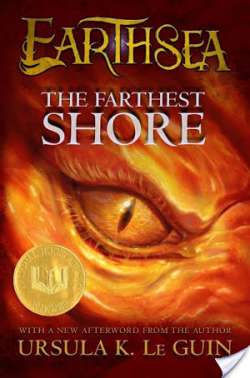
The National Book Award–winning third novel in the renowned Earthsea series from Ursula K. LeGuin. In this third book in the Earthsea series, darkness threatens to overtake Earthsea: The world and its wizards are losing their magic. But Ged Sparrohawk—Archmage, wizard, and dragonlord—is determined to discover the source of this devastating loss. Aided by Enlad’s young Prince Arren, Ged embarks on a treacherous journey that will test their strength and will. Because to restore magic, the two warriors must venture to the farthest reaches of their world—and even beyond the realm of death. With millions of copies sold worldwide, Ursula K. Le Guin’s Earthsea Cycle has earned a treasured place on the shelves of fantasy lovers everywhere, alongside the works of such beloved authors as J.R.R. Tolkien and C.S. Lewis.
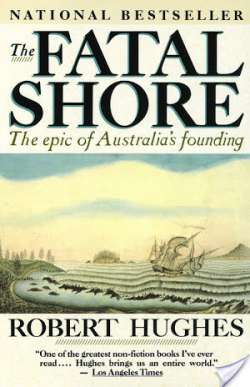
In this bestselling account of the colonization of Australia, Robert Hughes explores how the convict transportation system created the country we know today. Digging deep into the dark history of England's infamous efforts to move 160,000 men and women thousands of miles to the other side of the world in the eighteenth and nineteenth centuries, Hughes has crafted a groundbreaking, definitive account of the settling of Australia. Tracing the European presence in Australia from early explorations through the rise and fall of the penal colonies, and featuring 16 pages of illustrations and 3 maps, The Fatal Shore brings to life the incredible true history of a country we thought we knew.
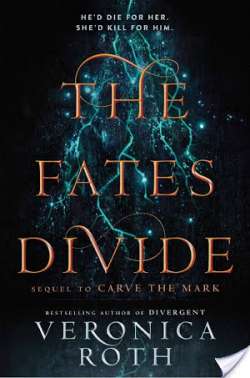
In the second book of the Carve the Mark duology, globally bestselling Divergent author Veronica Roth reveals how Cyra and Akos fulfill their fates. The Fates Divide is a richly imagined tale of hope and resilience told in four stunning perspectives. The lives of Cyra Noavek and Akos Kereseth are ruled by their fates, spoken by the oracles at their births. The fates, once determined, are inescapable. Akos is in love with Cyra, in spite of his fate: He will die in service to Cyra’s family. And when Cyra’s father, Lazmet Noavek—a soulless tyrant, thought to be dead—reclaims the Shotet throne, Akos believes his end is closer than ever. As Lazmet ignites a barbaric war, Cyra and Akos are desperate to stop him at any cost. For Cyra, that could mean taking the life of the man who may—or may not—be her father. For Akos, it could mean giving his own. In a stunning twist, the two will discover how fate defines their lives in ways most unexpected. Praise for Carve the Mark: #1 New York Times bestseller * Wall Street Journal bestseller * USA Today bestseller * #1 IndieBound bestseller “Roth skillfully weaves the careful world-building and intricate web of characters that distinguished Divergent.” —VOYA (starred review) “Roth offers a richly imagined, often brutal world of political intrigue and adventure, with a slow-burning romance at its core.” —ALA Booklist
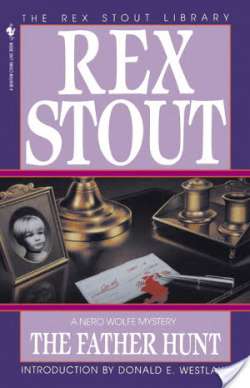
All pretty Amy Denovo wants to find the father she has never seen, but she can’t afford Nero Wolfe’s outlandish fees . . . or can she? Suddenly she’s knocking on the oversized detective’s door with a parcel full of bills in hand—and a quarter of a million hidden in her closet. It’s all part of a nest egg left by her unknown father. But when Wolfe and his able assistant, Archie Goodwin, begin to trace the money to the man, they make a startling discovery: Amy’s father murdered her mother—and now he may be after her. “It is always a treat to read a Nero Wolfe mystery. The man has entered our folklore.”—New York Times Book Review
